What Size Wire for Outlets (Comparison, Selection, Advice)
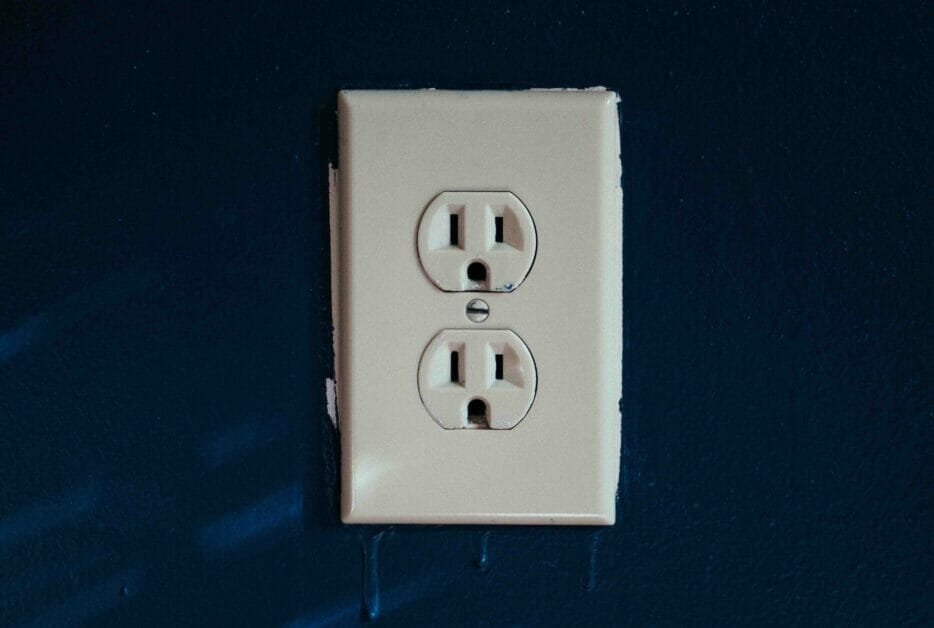
Ever found yourself scratching your head, trying to figure out what size wire you need for your outlets? Yeah, I’ve been there too. It’s one of those seemingly simple tasks that can quickly become a full-blown headache if unprepared.
The answer largely depends on the expected load on the outlet and local electrical codes, but generally speaking, you’ll most likely need 12 or 14-gauge wires for regular 120-volt residential outlets.
Now hold up! Before we dive any deeper, let me clarify something real quick. When we talk about ‘gauge,’ we mean the diameter of the wire – it’s like a measure of thickness. And here’s a little curveball: in this bizarro world of electrical wiring, the larger the gauge number, the smaller the wire diameter is! Go figure!
In this article, I will explain why size matters (in electrical wiring!), what those numbers mean practically, and how to choose wisely when standing in that hardware store aisle feeling overwhelmed by options.
Understanding Electrical Wires and Outlets
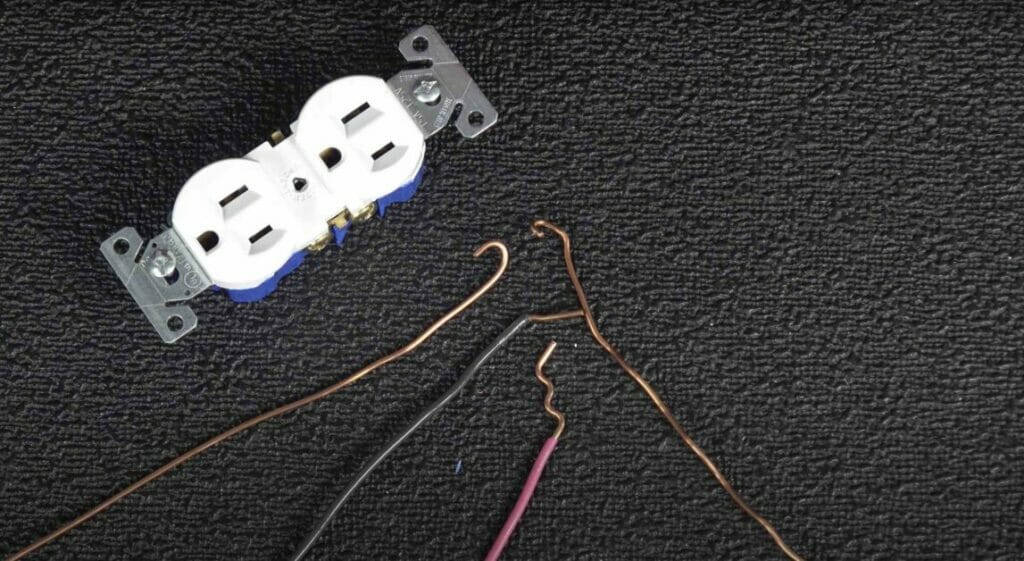
Now, let’s talk about something: electrical wires and outlets. Regarding wiring for outlets, size matters – quite a lot! The wire size plays an essential role in the safety of your electrical system.
To start, we have two key players: gauge and amperage. Wire gauge refers to the physical size of the wire, which is important because it dictates how much current the wire can safely carry. On the other hand, amperage is all about how much electric power an appliance or device uses.
So why does this matter? If you have a device that draws more power than the wire can handle (meaning its amperage is too high for the gauge), that could lead to overheating and even fires. Scary stuff!
Here’s a quick cheat sheet I put together:
| Wire Gauge | Amperage |
|---|---|
| 14 | 15A |
| 12 | 20A |
| 10 | 30A |
Typically, most household outlets use either 14-gauge wire for 15-amp circuits or 12-gauge wire for 20-amp circuits. When in doubt, always go with a larger (lower-numbered) gauge.
And don’t forget about outlet types! There are different kinds, like duplex receptacles (your standard wall outlet), GFCI outlets (those with test buttons usually found in wet areas like bathrooms), and heavy-duty outlets for appliances like dryers or ovens.
Why the Size of Your Wire Matters
Now, let’s dive into why the size of your wire matters. You probably think it’s all about fitting into those pesky outlet boxes, right? Well, that’s just part of the story!
First, you must understand this – the size of your wire determines how much electrical current it can safely carry. It’s like trying to squeeze a football team through a narrow hallway – too many big guys, and someone will get hurt! And trust me, when we’re talking about electricity, that ‘hurt’ can mean serious damage or even devastating house fires.
Remember this: bigger is generally better when it comes to wires. Larger gauge wires (and yes, in wiring, larger gauges mean thinner wires – go figure!) can’t handle as much current as their thicker counterparts. So you’ll need beefier wires if you plan on running serious appliances in your space, like a heavy-duty air conditioner or electric furnace.
Here’s a handy-dandy chart for you:
| Appliance | Minimum Recommended Wire Gauge |
|---|---|
| Table Lamp | 18 |
| Computer | 16 |
| Air Conditioner (Window Unit) | 14 |
| Electric Furnace | 10 |
But here’s where things get tricky. Even if you’re not planning on using such power-hungry devices immediately, future-proofing is always wise. So don’t skimp out on wire size now, only to regret it later!
And finally – safety first! Incorrectly sized wiring isn’t just inefficient; it’s downright dangerous. Wires too thin for their load will overheat and could cause an electrical fire.
So remember, folks:
- Bigger appliances need thicker wires
- Consider future usage when choosing wire size
- Safety should always be your top priority with wiring
That’s all there is to it! Now go forth and choose wisely – after all, picking the right wire is more than just matching sizes – it’s about creating safe homes and efficient energy use.
The Link Between Wire Size and Outlet Power (AMPS)
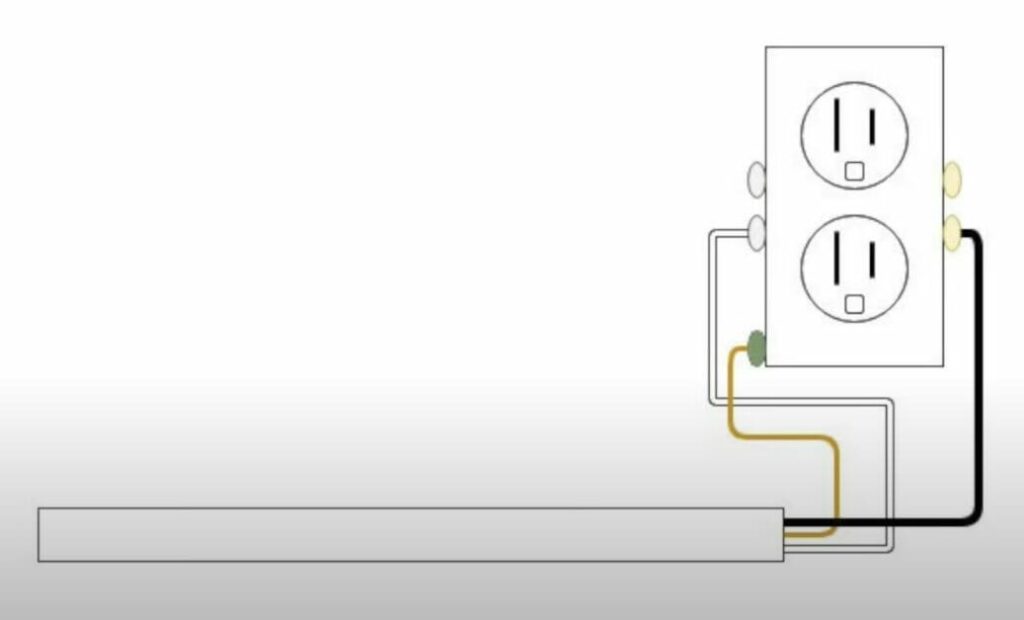
Have you ever thought about the link between wire size and outlet power? It’s like a dance. When they’re in sync, everything flows smoothly. But if one partner steps on the other’s toes (or wires, in this case), things can get pretty messy!
Let’s start with the basics. Every wire has a certain amount of electricity it can safely carry – we call this its ampacity. Now, ampacity is a big deal when choosing your wire size.
Here’s why: Each electrical device requires a certain amount of electricity to run efficiently – think of it as its “food.” So, an outlet that powers up heavy-duty appliances like your refrigerator or washing machine will need more electricity than, say, one that charges your phone.
Now, where does the wire fit into all this? Well, you’ve got to ensure that your wire can handle the appetite of whatever appliance you plug in. If not, you risk overheating and fires – yikes!
Here’s an example:
| Appliance | Amps Required |
|---|---|
| Refrigerator | 6-10 |
| Washing Machine | 15-20 |
If I’m hooking up my fridge, which needs around 8 amps (check out my handy table above), I’d need at least a 14-gauge wire with an ampacity of 15 amps.
See how they work together? Just imagine pouring a gallon of water through a straw…it would take forever, right? That’s exactly what happens when your wire is too small for your appliance – it just can’t keep up!
But remember, folks – always consult with an electrician before making any decisions about wiring or electrical installations at home. Safety first, always!
So now you know – the bigger the demand, the beefier our wires must be. And that’s how we keep the dance smooth and safe!
Common Types of Electrical Wires for Outlets
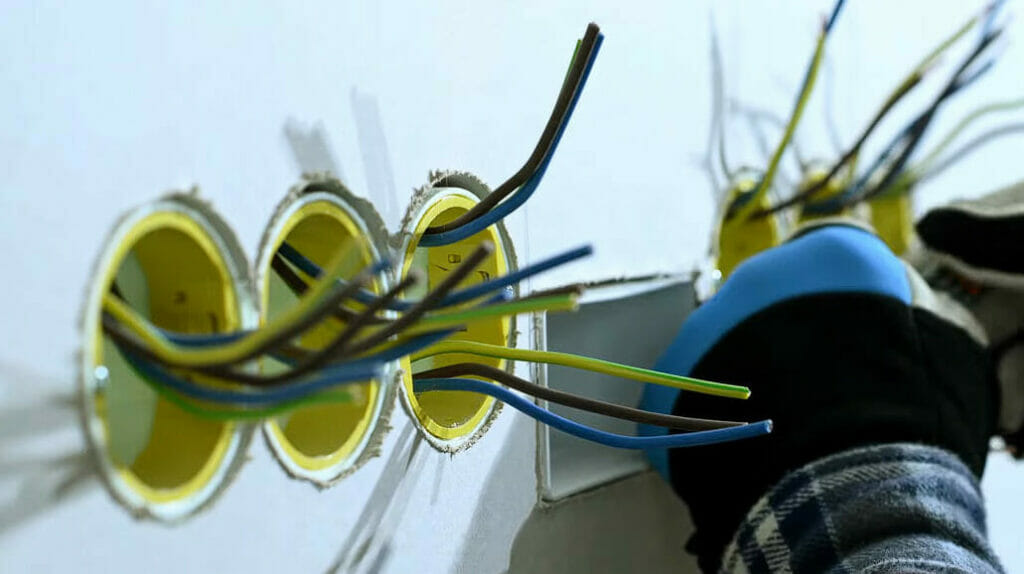
Alright, folks, let’s dive right into the world of wires! Ever wondered what kind of wire is hiding behind your outlet covers at home?
Well, it’s not as complicated as you might think. We typically use three main electrical wires for outlets: Non-Metallic (NM) Cable, Underground Feeder (UF) Cable, and Low-Voltage Wire.
First up, we have Non-Metallic (NM) Cable. This is probably the most common type of wire in residential homes today.
It has a plastic sheathing that makes it easy to handle and install. And inside that sheathing, you’ll find two or more insulated wires and one bare ground wire. Remember, when working with NM cable, always make sure it matches the circuit amperage! For example:
- 14-gauge wire works great for 15-amp circuits
- 12-gauge can handle 20-amp circuits
- And if you’ve got a heavy-duty 30-amp circuit on your hands, go with a 10-gauge wire.
Next on our list is Underground Feeder (UF) Cable. This could be your go-to guy if you’re running an outdoor outlet or wiring up a shed or garage light. UF cable has solid plastic on the outside, which means it can withstand moisture and other outdoor elements without further protection.
Last but certainly not least – we’ve got Low-Voltage Wire. This little fellow isn’t designed to carry much power, so he’s perfect for doorbells and thermostats.
Here’s a quick recap:
| Type of Wire | Common Uses |
|---|---|
| Non-Metallic (NM) Cable | Indoor wiring systems |
| Underground Feeder (UF) Cable | Outdoor & underground applications |
| Low-Voltage Wire | Doorbells, thermostats |
Remember, folks – safety first when handling these bad boys! Trust me, always turn off the power before working with any electrical system.
How to Determine the Right Wire Size for Your Outlet
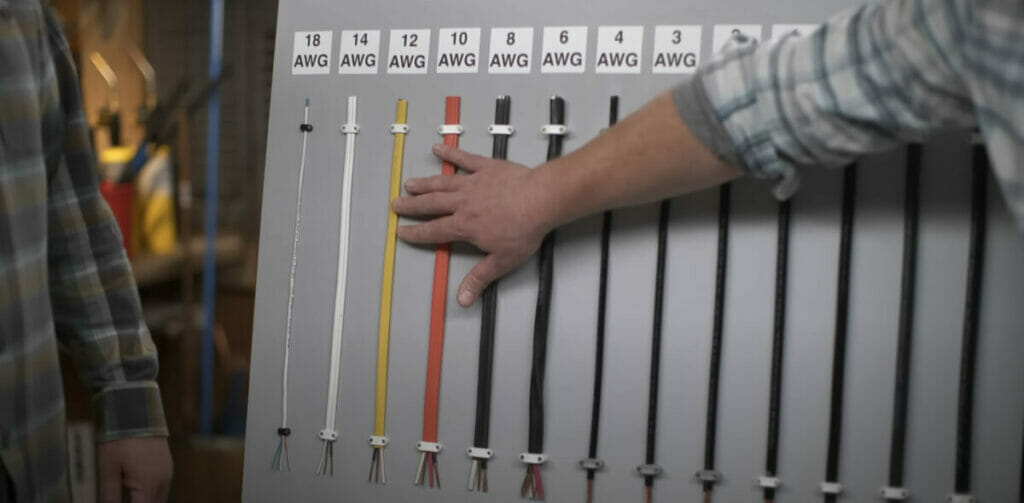
First off, it’s all about safety. Wiring is not something where you want to cut corners or take guesses. Incorrect wiring can lead to overheating and, potentially, fires. So let’s get this right from the start!
The size of the wire is typically determined by two factors: the circuit’s amperage rating and the wire’s length. In the US, we primarily use 14-gauge (15-amp circuits) and 12-gauge (20-amp circuits) wires for typical household outlets.
Let me lay out these standard measurements:
| Amp Rating | Wire Gauge |
|---|---|
| 15 A | 14 AWG |
| 20 A | 12 AWG |
Can you go bigger? Well, sure! You can always use a larger wire for a lower amp circuit – consider it an extra safety buffer. But remember – never do it and vice versa!
By the way, AWG stands for “American Wire Gauge,” our standard method of denoting wire diameter. Again – Smaller numbers mean thicker wires.
One more thing – when running long lengths of wire (say over 100 feet), you might need to step up your gauge game even further! That’s because resistance increases with distance – gotta keep that current flowing smoothly!
- Got a lengthy run? Go heavier!
- Short span? Stick to standard.
Safety Precautions When Choosing Wire Sizes
To help you out, here’s a handy table:
| Wire Gauge (AWG) | Maximum Amps |
|---|---|
| 14 | 15 |
| 12 | 20 |
| 10 | 30 |
Remember, these values are maximums! Don’t push your wires to their limits all the time.
Now, let me tell you about circuit breakers. These little guys are designed to trip and cut off power if too much current flows through them. But don’t rely on them entirely – they might not trip in time if your wire is too small.
Next up: insulation! Different types of insulation have different temperature ratings. Typically, household wiring uses 60°C or 90°C rated insulation, but check this before pulling out your wallet.
Finally: always turn off the power at the breaker box before working on any circuits! I cannot stress this enough – it’s easy yet crucial for your safety!
Potential Problems with Incorrectly Sized Wires
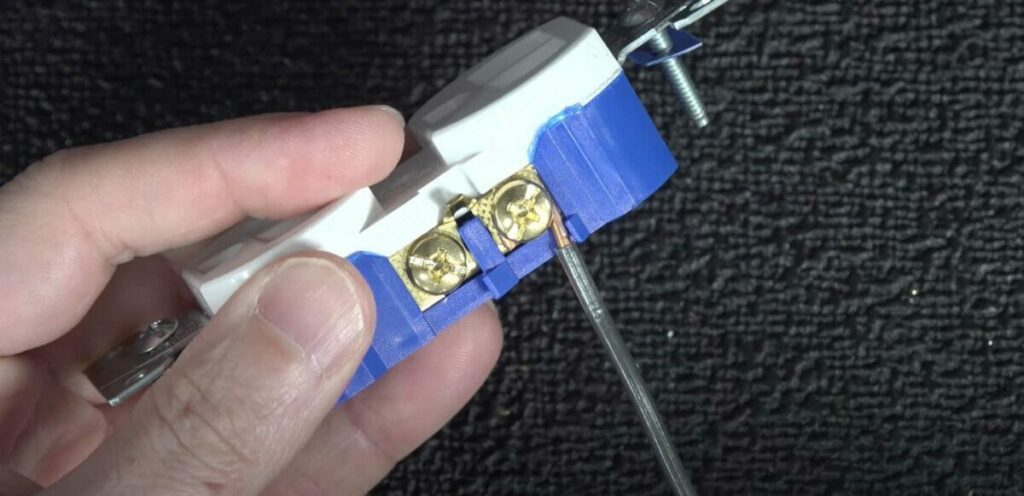
I’ve seen some pretty scary stuff regarding DIY projects gone wrong. And one of the most common mistakes I’ve encountered is using incorrectly sized wires for outlets. Trust me, folks, this isn’t something you want to mess up!
So let’s dive into what can happen if your wire sizes are wrong. First off, overheating is a biggie. If a wire is too small for the current it’s carrying, it can quickly overheat and potentially cause a fire.
And then there’s equipment damage. Yeah, that brand-new 4K TV you just bought could be perilous if your wiring isn’t up to snuff. An undersized wire can lead to voltage drops which may harm sensitive electronics.
But wait…there’s more! Poorly chosen wires also result in energy inefficiency. That means you’ll be paying more on your electricity bills than necessary – and who wants that?
The Importance of Correct Wire Sizing
Well, my friends, here we are at the end of our journey. It’s been a blast exploring the ins and outs of outlet wiring with you.
Let’s wrap things up by hammering home why correct wire sizing is important.
For starters, safety. Nothing is more critical than this. Too small a wire for a given current can overheat and cause fires. Overheating is not something you want happening behind your walls!
Next up efficiency. When I say ‘efficiency,’ I’m talking about how well electricity travels through your wires to reach its destination – your outlets and appliances. If you’ve got the wrong size wire, you’ll lose power due to resistance in those wires.
- 14-gauge wire usually works for 15-amp circuits
- 12-gauge wire fits the bill for 20-amp circuits
- For larger appliances or dedicated circuits, 10-gauge or larger is often needed
Remember folks:
- Smaller appliances (like lamps) = smaller gauge numbers (~14)
- Bigger appliances (like dryers) = bigger gauge numbers (~10)
It’s pretty neat when you think about it!
And finally, longevity matters too! Properly sized wiring will last longer because it won’t be constantly strained by carrying too much current.
So there you have it! These are all good reasons why getting that wire size right makes all the difference in your electrical projects.
References
Studies and Organizations:
- National Electrical Code (NEC). https://www.nfpa.org/
- Electrical Safety Foundation International (ESFI). https://www.esfi.org/
- Institute of Electrical and Electronics Engineers (IEEE). https://www.ieee.org/
Books:
- “Wiring Simplified” by H. P. Richter, W. Schwan, and F. P. Hartwell
- “Black & Decker The Complete Guide to Wiring, Updated 7th Edition” by Black & Decker
- “Electrical Wiring Residential” by Ray C. Mullin and Phil Simmons
Websites:
- The Home Depot. https://www.homedepot.com/
- Lowe’s. https://www.lowes.com/
- Family Handyman. https://www.familyhandyman.com/
- Energy.gov. https://www.energy.gov/
Video References:
Silver Cymbal
HandyDadTV
This Old House
